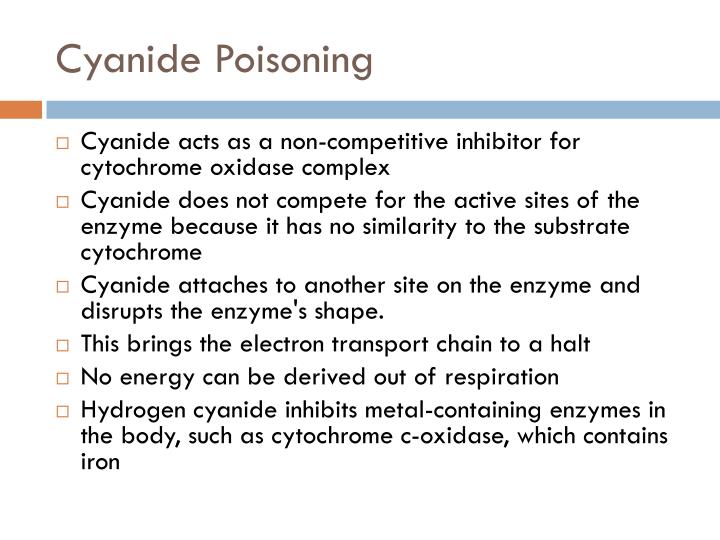

Cyanide antidotes may also dilate the blood vessels to reduce oxygen demand.

It inhibits oxidative phosphorylation in the cells-a process where oxygen is utilized for energy production-that can cause: The mechanism of cyanide intoxication has been attributed to the inhibition of cytochrome oxidase, thereby decreasing the tissue utilization of oxygen. Medical exposures such as sodium nitroprussideĬyanide mixes into the bloodstream rapidly.10 In smoke generated from explosions and fires, the concentration of CO can reach 60, magnitudes greater than atmospheric CO concentration of less than 0.001. The purpose of this study was to determine if sodium nitrite and sodium thiosulfate are effective cyanide antidotes when given by intramuscular injection. What to do in Case of Cyanide Poisoning Remove the patient from the contaminated area.

of antidote prophylaxis and treatment of acute cyanide poisoning. The most common causes of cyanide poisoning are: Mechanism I: BAL, or dimercaprol, is often useful as an antidote for poisoning by lead, arsenic, and mercury. Inhalation injury is the second strongest predictor of mortality of both mother and fetus following burn injury. POTENTIAL DIRECTIONS OF THE IMPROVEMENT OF ANTIDOTE THERAPY OF CYANIDE POISONING. Cyanide antidotes are drugs used for treating cyanide poisoning.


 0 kommentar(er)
0 kommentar(er)
